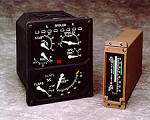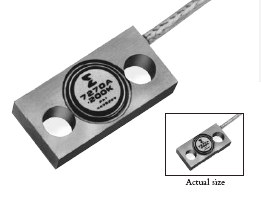 ABOVE: Vibro-Meter Pressure
ABOVE: Vibro-Meter Pressure
Indicators
A story by Dan Browning in the Minneapolis Star-Tribune alerted me to an investigation of Global Engineering Associates (“GEA”), a company located in a Minneapolis suburb. According to a recently unsealed search warrant (which Dan Browning was kind enough to send to me), GEA is being investigated for alleged shipments of pressure indicators and radio mounts to Singapore.
A search warrant needs to show probable cause for all elements of the crime and, of course, the scienter element of the violation — i.e. evidence that the defendant knew that the exports were in violation of the law — is, as usual, the hardest part to establish. The affidavit supporting the search warrant places its main emphasis on a visit made to GEA by agents of Immigration and Customs Enforcement under “Project Shield America,” a national outreach program initiated by ICE to inform exporters of export licensing requirements. According to the affidavit:
Special Agent Cramsey and Leff [the CEO of GEA] discussed the Project Shield America program in detail and exchanged business cards. Leff was given copies of the Project Shield America brochures for his review. Leff stated that he would be happy to review the literature to ensure his company was in compliance with all US export laws and regulations.
I don’t think I’m being too much of a cynic to suggest that this is a thin reed upon which to base scienter, and it’s not the first time that ICE has tried to use Project Shield America as a basis for claiming that export violations were willful. There is no question that the project teaches exporters that licenses are required for military and dual-use items. The problem is it provides little guidance to exporters in how to determine whether items are military or dual-use items.
In this case, the items in question aren’t obviously military items. Vibro-Meter, the manufacturer of the pressure indicators in question, produces pressure indicators for both civil and military aircraft. Nor does a “radio mount” have anything about it that inherently suggests that it is a military item. Indeed, ICE needed to request a specific determination from the Directorate of Defense Trade Controls to get the information necessary to conclude that these were military items on the USML. So, a friendly visit from ICE agents and a short brochure aren’t going to establish that GEA knew that these items were military items and therefore subject to export licensing requirements.
There are two other facts alleged in the affidavit that might support probable cause on the scienter element. First, there is a claim that the invoice inside the shipping packages differed from descriptions of the items in the shipping documents. However, it appears from the affidavit that the enclosed invoice simply had more detail than the descriptions in the shipping document, not necessarily an indication of criminal intent by the exporter. Second, the affidavit indicates that GEA never inquired about the two shipments containing the allegedly export-controlled items, both of which were seized by customs. That is, admittedly, somewhat more suspect, but there could be a number of innocent explanations.
The important consideration here is an issue that increasingly needs to be addressed. Export prosecutions have begun to veer from prosecution for exports of items that reasonable people would clearly realize were export-controlled — guns, tanks, night vision and the like — to less obvious items such as involved in this case. Some procedure needs to be implemented to assist exporters in determining export classification, and the current commodity jurisdiction procedure, which can take a year or more, is broken and not the answer.


 Posted by
Posted by  Category:
Category: 


 The saga of the government’s ill-fated prosecution of Alex Latifi and his company Axion Corporation continues. The federal district court judge delivered yet another forceful gavel whack to the hands of the prosecutors and
The saga of the government’s ill-fated prosecution of Alex Latifi and his company Axion Corporation continues. The federal district court judge delivered yet another forceful gavel whack to the hands of the prosecutors and 
 Of course, you didn’t expect that this blog would let a story about an arms company run by a 22-year-old kid and a 25-year-old “professional masseur” escape without comment, did you? The
Of course, you didn’t expect that this blog would let a story about an arms company run by a 22-year-old kid and a 25-year-old “professional masseur” escape without comment, did you? The 

